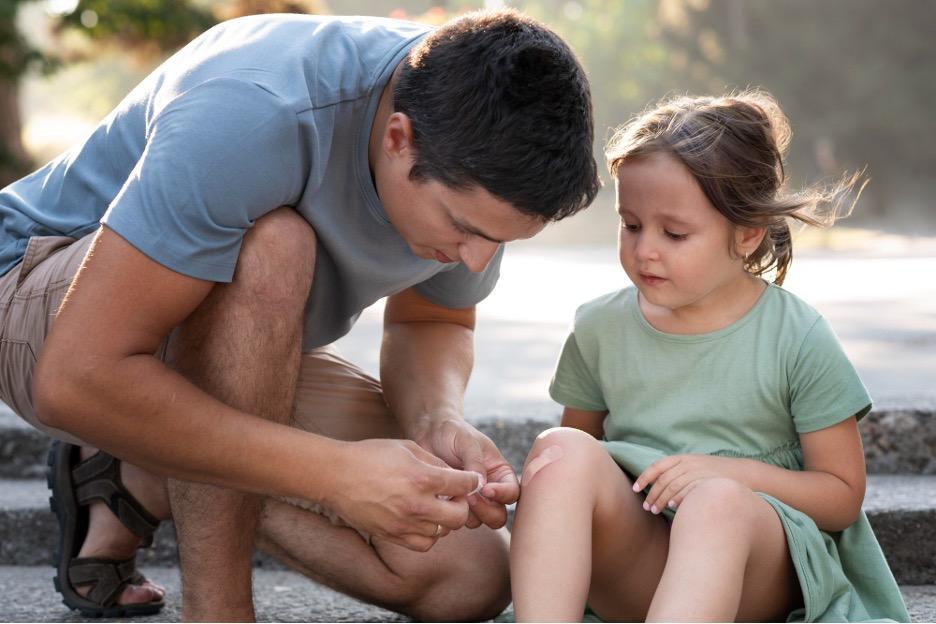
Identifying and Bully Proofing our Children

Identifying and Bully Proofing our Children
We all have the power to identify bullying, become upstanders, model kindness and bully-proof our children.
IDENTIFYING BULLYING
We can usually identify bullying through the following three characteristics: intent, repetition, and power. A bully intends to cause pain, either through physical harm or hurtful words and does so repeatedly.
Bullying is a pattern of behavior, rather than an isolated incident.
Bullying can happen in many ways. It can include teasing, being hurtful to someone, ignoring them or hurting them. It can happen anytime – in person, online, on the phone, in class, on the bus, in your neighborhood or even in your home.
SIGNS MY CHILD IS BEING BULLIED
*Physical marks
*Fear of going to school
*Anxiety
*Losing friends
*Personal belongings lost or destroyed
*Asking for money often
*Low academic performance
*Absenteeism from school
*Trying to stay near adults
*Sleeplessness
*Physical ailments
*Distressed
*Secretive
*Aggressive
*Angry outbursts
CHILDREN AT RISK
Bullies generally choose victims who lack assertiveness or appear under-confident.
Bullies particularly prey on children who become upset when picked on or may not have other kids come to their defense.
Some additional risk factors are:
*Unstable family
* Experiences or witnesses verbal or physical abuse
*Perceived as being different or weak
*Depressed, anxious or low self esteem
*Less popular with few friends
WHO ARE THE BULLIES?
Bullying is usually done by people who do not feel good about themselves. They often need to put others down to feel better about themselves.
There are two types of kids who are more likely to bully.
Some are well-connected to their peers, have social power, are overly concerned about their popularity, and like to dominate or be in charge of others.
Others are more isolated from their peers and may be depressed or anxious, have low self-esteem, be less involved in school, be easily pressured by peers, or not identify with the emotions or feelings of others.
Children who have these factors are also more likely to bully others.
*Aggressive or easily frustrated
*Little parental involvement
*Family problems
*Think badly of others
*Have difficulty following rules
*View violence in a positive way
*Have friends who bully others
Remember, those who bully others do not need to be stronger or bigger than those they bully. The power imbalance can come from a number of sources—popularity, strength, cognitive ability—and children who bully may have more than one of these characteristics.
TEACHING OUR CHILDREN TO BE UPSTANDERS.
An upstander is someone who recognizes when something is wrong and acts. It's a person who stands up for others and has the courage and empathy to make a difference.
Children are the best people to help stop bullying. Adults are not always around but other children are generally in the vicinity of the bully.
Our children should know if a bullying situation gets out of control, they can and should involve an adult.
BULLY-PROOF
Parents have the ability to bully-proof their children. Children need to feel loved, safe and confident.
Educating our children about bullying is an important step in prevention. Once they know what bullying is, your children will be able to identify it. The more we talk to our children about bullying, the more comfortable they will be telling us if they see or experience it.
Talk to your children about what they think is good and bad behavior at home, in school, in the community and online.
Help our children be a positive role model. There are three parties to bullying: the victim, the perpetrator, and the bystander. Even if children are not victims of bullying, they can prevent bullying by being inclusive, respectful, and kind to their peers. If they witness bullying, they can stick up for the victim.
Help build your child’s self-confidence. Encourage your child to enroll in classes or join activities they love. This will build confidence as well as have a group of friends with shared interests.
Model to your child how to treat others with kindness and respect. Children who grow up in a loving environment will less likely be bullied or become the bully.
“There is no exercise better for the heart than reaching down and lifting people up” – John Holmes
For more information, please visit
Sincerely,
Dr. Atousa and the entire staff at Healthy Kids Care at Sunrise
You Might Also Enjoy...


Creative Ways to Promote Healthy Eating in Children

Recognizing the Signs of Anxiety in Young Children and What Parents Can Do?

10 Tips for Better Sleep Hygiene

Christmas safety tips


